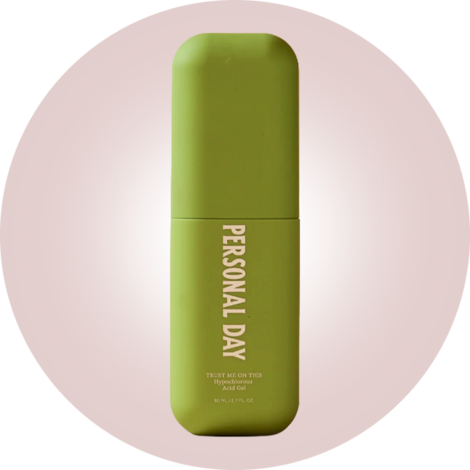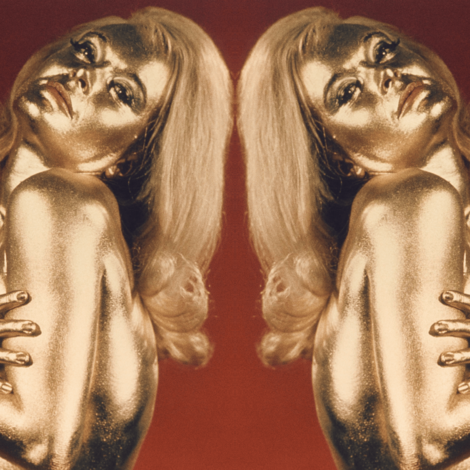Last summer marked the culmination of a decade-long quest to get a cute photo of me on a bicycle. For years, I would pull up next to a friend as we biked somewhere and demand to be photographed, certain that I looked breezy and Gwyneth-like. But every time, something was critically busted about the photo. My shoulders were hunched. Tendrils of sweaty hair clung to my face. The way I bent over the handlebars caused my waistband to bisect my abdomen. But last June, when my sister proposed we spend a weekend at a resort on the Riviera Maya, I figured I had it in the bag: sisters are legally required to take as many photos of you as you want, and best of all, the resort had a fleet of vintage-y white bikes. My perfect photo was just a few (thousand) clicks away.
Nope. The photos were cursed in the same way that photos of me had always been cursed. But nestled in the cesspool of my camera roll was a video of me, in a red bikini top and tiny jorts, effortlessly cycling through the jungle. I knew as soon as I saw it that it would be my avenue to love. I looked happy (Mexico!) and lithe (loss of appetite following a recent breakup!). I was sitting up straight, and I was laughing and shouting something mercifully indecipherable at my sister. I was moving fast enough that the casual viewer could not see that I was covered in sweat; I just looked beachy wet. I could not wait to scuttle home with my treasure and add it to my dating-app trove.
The validation was instant. I would pick up my phone every 15 minutes, eyes blistering as I watched the matches assemble, almost all “liking” my mundane little video. Since I first sampled dating apps’ pu pu platter of horrors, I had suspected that I am not at my best in photos—a man once said, on our first date, “It’s always nice when someone looks better than their photos”—but now I realized I simply hadn’t found my medium.
I assumed that it was the novelty of a video, rather than the bike or the non-outfit, that had upped the ante. This theory was supported by Reddit. “I swear adding videos to Hinge has changed the whole game for me,” one Redditor wrote, adding that they had A/B tested profiles across apps and their Hinge videos received by far the most likes. “Yup. I’m surprised more people don’t do this,” another user replied. “I have 4 vids, 2 photos. I get tons of matches on Hinge. I even get roses and I’m a guy.” Roses! And he’s a guy!
Some Redditors did express “the ick” for videos of people smoking or singing into the camera, as well as for “insta chicks pouting at the camera whipping their head back” and “guys flaunting money.” Likewise, video “prompts” such as those offered by Hinge, in which users film themselves replying to different questions, were generally considered cringe. But the consensus was that a video of yourself demonstrating a talent or doing something active or funny can only help your cause. I had been riding into battle with a musket when a bazooka was within reach.
Granted, not everyone photographs poorly. And not everyone who thinks they photograph poorly actually photographs poorly. I called Jason Haberman, an associate professor of psychology at Rhodes College, who co-authored a study of the “frozen face effect,” the phenomenon that explains why otherwise attractive people look hideous when Zoom freezes mid-speech. Haberman told me that when people don’t like how they look in photos, or when they don’t feel accurately represented in photos, they might just be having a natural reaction to a very unnatural experience. “Our visual systems did not evolve looking at static images of people,” he said. “It’s something we’re not used to, which is why seeing a video or something can be so much more compelling.” The spookiness of still photos is why portrait photography is such an art, he added, and why wedding photographers must take thousands of pictures at a reception to get one where nobody looks like The Scream.
Another problem: we’ve gotten very used to how our faces look in the mirror. Haberman has also studied mirror reversal: the face we see in the mirror is actually the reverse of the face others see when they look at us. Since photos are non-reversed, some people find pictures of themselves unsettling just because they are better acquainted with the version of their reflected faces. (I have a pronounced asymmetry between my eyes and brows—diligently corrected with Dysport—which may account for the jump scare I get when I see photos of my face.) In other words, a “bad” photo of you might look bad only to you.
But believe me, so much can go wrong in a photo beyond the arrangement of the face. When I feel a camera upon me, I compulsively hook my thumbs through my belt loops, middle-school style. I draw in my chin, and an inhuman smile stretches across my face, causing my eyes to disappear. The best I can hope for is that the photographer will keep shooting until I tire myself out and return to my default. (I have asked my Dysport guy if my photo smile can also be corrected, but apparently there are “risks” to immobilizing the entire face.) But when someone is taking a video of me, I don’t freeze in a demonic grin like Pennywise. I look, for better or for worse, like myself. Myself on a bike.
When I really thought about it, it began to seem very ill-advised to deploy my photo face to trap suitors. I raised my anxiety with Clare Sutherland, a senior lecturer at the University of Aberdeen who has studied “the curse of self in profile image selection.” Sutherland warned me that first impressions are generally inaccurate anyway, but especially when we are swiping on 10,000 people per hour on dating apps. “There’s always going to be a bit of give-and-take between how people want to come across and who they actually are,” she said. “And I think that gap is enough to explain why accuracy will never be especially high.”
Videos can mislead, too. But I think it’s harder to fake a persona for the duration of a video, versus for the instant it takes to make a photo. This level of accuracy, too, carries risks. You might be flooding possible matches with turnoffs: maybe you have an unexpected voice; maybe contextual clues in a video will reveal your true height. There are, Haberman pointed out, “more opportunities for criticism, more opportunities for rejection. So you’ve got to really nail the video.”
I’m not sure you do, though. Once I began paying attention to my own behavior on dating apps, I noticed that I generally swiped right on men who posted videos of themselves wakesurfing, which in Austin, where I live, is one in three. I swiped right even when they weren’t doing cool tricks and even when the videos weren’t particularly flattering, and I always swiped right on the men who posted videos of themselves falling. I was less drawn to the content than I was to their confidence—the confidence to post a video at all, and the confidence to look stupid at 30 frames per second.
For some of us, that’s less risky than trying to look normal in a photo.
Lauren Larson is an Austin, Texas–based writer and editor. Her work appears in GQ, Texas Monthly, The New York Times, and New York magazine





